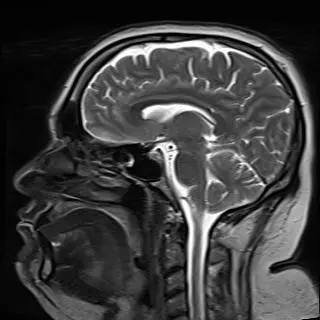I got the T460 refurbished and I really didn’t want to run Windows 10 on it. I last used Linux for any real length of time a good 20 years ago, so I’m pretty inexperienced with it at this point and I had to figure out how to install it myself.
They made it unreasonably difficult to first install an OS from a USB stick. I had to go into the BIOS, turn UEFI to legacy, turn off secure boot, reboot to boot from the USB stick, install Mint, then turn legacy back to UEFI to get it to boot from the hard drive. This took about 2 hours of trying to figure it out by doing a lot of forums reading.
I do not blame the Mint community or the Linux community as a whole. There is absolutely no reason that it should have been that hard to install Mint on that notebook.
I don’t even think getting into the BIOS once time should be necessary, but changing a BIOS setting so you can install the OS and changing it back so you can run the OS off the internal drive is just ridiculous and I find it hard to believe Lenovo couldn’t have just made it easier. I’m fairly convinced this was intentional on their part.
I’m not an IT professional or anything, but I know enough to figure this stuff out with effort, but it shouldn’t have taken that effort. It should have been almost plug-and-play. This is 2024. The notebook isn’t even 10 years old.
Is there actually a good reason for this or are they just kissing Microsoft’s ass?
This has nothing to do with Lenovo perse, this is the average experience for every laptop I’ve owned which had Secure Boot turned on.
You know what is fun? Having your Dell basically bricking because Fedora starts shipping a new version of shim-x64 which completely fails the UEFI handover to bootloader. Leaving you unable to boot at all, so no chance of reaching rescue mode. Then more fun times of booting a live environment from a usb stick after going through the same hoops you went through, finding out how to decrypt your BTRFS partitions, manually mounting and chrooting them so you can finally downgrade the offending package.
Linux and Secure Boot just isn’t a great combination if you ask me.
That sounds pretty awful, sorry that you went through that.
And that’s just the quick summary, first time I just restored a backup. But as my system immediately failed again after updating I started digging and came across some obscure posts of Lenovo users (ok, maybe Lenovo isn’t that great with implementing Secure Boot after all 😋) having the same issue and devised that rescue plan. Quite the nightmare indeed, but at the other hand it also taught me some new skills. After going through the same routine on each update of that package I ended up excluding it from updates in DNF.
Don’t now if the issue was ever resolved, I’ve since stepped away from Fedora as I’ve just had too many of these weird issues with it on each new release. Creating bug reports and the accompanying warm feeling of helping to improve the Linux ecosystem is nice, but in the end I just need to get work done.
deleted by creator
It’s impossible to make the situation with BIOS easier. Incorrect boot order and secure boot are enabled by default for security and Windows compatibility reasons. Though I never heard that it’s required to turn on legacy mode and change it back. Probably it’s a highly model-specific thing. And btw secure boot is Mint’s fault. It just doesn’t support it yet
It’s not even machine specific. UEFI vs legacy bios boot mode is universally supported in all but the latest systems. If OP had to switch to legacy boot mode then they probably made the USB “incorrectly”. You’d run into the same issue on windows if you made the USB boot drive for legacy bios mode.
I’d love to know what I did wrong if you can tell me. I used Etcher like the instructions on Mint’s website told me to.
Idk. I use Etcher and it never asks for any modes. Rufus is different though
And btw secure boot is Mint’s fault. It just doesn’t support it yet
Not the case. I’m typing this on a Surface laptop running Mint with Secure Boot enabled. Even the bootable Mint USB can be run with Secure Boot turned on.
Hmm then I guess I made a mistake
secure boot is Mint’s fault.
Well now I’m just surprised considering this is a 2016 notebook. They should be supporting a feature that old, shouldn’t they?
Some distros support it but it’s only like 4 or 6 of them. I guess it’s really hard to support and maintain such feature
This sounds like it was strictly the fault of the USB load. If you make a UEFI USB (you should use Ventoy, it’s great btw) all you would need to do is shut off Secure Boot and install.
Most bootable drives don’t support Secure Boot. You turn it off, do the install, and turn it back on if you want it. I personally just leave it off.
Outside of those caveats everything you described is industry-standard stuff. Nothing to do with Lenovo.
Being unable to boot from a USB drive in UEFI mode sounds like a Mint problem. I just booted from an Ubuntu LTS USB on a similar machine, installed with all default BIOS. Haven’t touched Secure Boot either. No trouble.
Hm. Maybe I should have tried a different flavor of Linux in terms of ease of install. But Mint seemed like the best choice for me and now that it’s actually up and running, it’s fine.
By all means, if it works already, don’t fuck with it.
This community hates on Ubuntu but these are the kinds of corner cases that can make or break a new user’s journey. Experienced users can resolve those with no emotion and we often discount the difficulty and importance of such issues to less experienced users. There’s been a lot of work put in Ubuntu to tackle these kinds of issues - paper cuts. Recall the One Hundred Paper Cuts project. This is why I won’t stop recommending Ubuntu LTS for new users.
It’s good to know for the future if nothing else, so I appreciate it.
Wow what a ride. Congrats on making it work, I’m not sure if I wouldn’t have given up at some point. Great job!
About kissing M$'s ass, don’t get me started on updating the BIOS on a HP Laptop, they require you to do that in Windows cause it’s the only way to get their downloader to run. So it’s not only Lenovo’s Laptops that don’t play nice with Linux.
I didn’t even want to take a chance with an HP considering how fucked up their printers are.
I have HP Zbook, Linux works fine. There is a BIOS bug that linux boot acknowledges and moves forward with…just an annoying few intial mesaages during bootup
I had to go into the BIOS, turn UEFI to legacy, turn off secure boot, reboot to boot from the USB stick, install Mint, then turn legacy back to UEFI to get it to boot from the hard drive.
That is ridiculous and it does sound like a Lenovo problem.
I’m running Mint on a Surface Laptop (which was difficult to install because Microsoft), but getting Secure Boot working only required changing the UEFI settings to allow non-Microsoft Secure Boot certificates. With that set Mint boots just fine both with Secure Boot enabled and disabled. So do USB installation ISOs.
Secure Boot can still be a pain. To get Virtualbox working with it enabled required signing several kernel modules which took a while to figure out.
Mint is great though. After distrohopping for years I finally decided I wanted to just use the OS and GUI, not play around with them and I came back to Mint. The latest versions of Mint just work and work for years once they’re installed. For me, going back to Windows (especially W11) feels like punishment. I hope you enjoy the switch.
Admittedly, I’ve only been able to play with it on and off today, but I am really liking it so far (except Firefox, which apparently no longer has a compact mode). I’ve had to use Macs for years for work reasons, but I don’t have to anymore and I said to myself that when my ancient Macbook died, I would replace it with something that runs Linux. MacOS is okay, not terrific (I hate how much RAM it uses though). I don’t mind using it, but I am not going to pay Apple’s prices now that I don’t have to just because it’s less annoying than Windows. So Linux is the perfect answer!
MacOS is okay, not terrific (I hate how much RAM it uses though).
On that note, I’ve been amazed how well Mint works with just 8GB of memory. I’ve had Firefox and Chrome running with plenty of open tabs, Thunderbird, Libreoffice Calc, and a half dozen other programs open while running W10 in Virtualbox. Mint just takes it in stride.
Use KVM I stead of Virtual box. It is way faster
I use a W10 VM for processing individual files once a week or so. With the required 2 Windows programs it takes about 3 minutes to complete the task and shut down the OS. Not worth switching.
Virtual manager with make it run so much faster though. Also its not a bad idea to have a few VMs just for fun anyway
Well, you shouldn’t have to turn UEFI off to boot from the USB stick. That one could actually be on Mint. Or on the way the stick was created. It’s been a while since I messed with this stuff but by now a typical Linux installation medium should be able to boot with UEFI.
The secure boot is enabled by default so that only signed operating systems and not some malware can boot the computer. And I guess it’s legitimate to not have the keys of all the Linux distributions under the sun in there.
I’m not a secure boot expert, but it sounds like Mint should be supported anyway, according to Wikipedia:
Secure Boot is supported by Windows 8 and 8.1, Windows Server 2012 and 2012 R2, Windows 10, Windows Server 2016, 2019, and 2022, and Windows 11, VMware vSphere 6.5 and a number of Linux distributions including Fedora (since version 18), openSUSE (since version 12.3), RHEL (since version 7), CentOS (since version 7), Debian (since version 10), Ubuntu (since version 12.04.2) and Linux Mint (since version 21.3). As of January 2024, FreeBSD support is in a planning stage.
Support doesn’t mean that their key is in there, though. It could also just mean that it has the ability to store its own key.
Thanks for the update <thumbs_up>
That sounds extremely infuriating! Regarding Lenovo and Linux Mint, I actually had a very good experience with them a little over a year ago. I bought a new IdeaCentre 5i pre-built desktop tower and had zero issues installing Mint on it. All I had to do was press F12 and select to boot from the bootable USB to install, no screwing with the BIOS or anything. But I’ve never tried installing Linux on a laptop. I only use desktops.
It was so stupid. F12 should have been all it took, but it didn’t even recognize the USB drive existed.
Well done. It’s a Lenovo issue. Had to do the same thing recently for a friends laptop and did the same dance.
I have some IT background so kind of knew what to look for but it still was a pita.
It’s just so stupid. Obviously other notebooks don’t have this issue. Some people are blaming Mint for not doing anything about it, but I’m still blaming Lenovo mostly.
You should have been able to boot from USB and install fully in UEFI mode with Secure Boot enabled, but sometimes the method you use to make the bootable USB can screw that up. I’ve always had good luck with Ventoy.
I recently installed it on a t480 while distrohopping. I didn’t need to turn off uefi, secure boot has been off since i got this laptop and i never turned it back on. My best guess is that you either did something wrong when making the live media, or during the installation. Next time try using ventoy, it’s a really useful tool.
I’ll try Ventoy next time, thanks. I just followed the install instructions on Mint’s website which says to use Etcher. Maybe that’s the problem.
Also, did you manually edit your partitions? It might be related to your bootloader being in
/bootinstead of/boot/efi. The first one’s for legacy bios, and the second is for uefi.Nope, I didn’t do that either.
I don’t feel like that’s exclusive to Lenovo, fwiw. I have an Asus laptop, and it went like that for me installing Linux from a USB stick. It was a hassle and you’re right that it seems harder than it needs to be.
I don’t have any idea why it’s like that, but it feels like it’s a better option than someone being able to walk up to my PC/laptop/whatever and change my os just by using a thumb drive without any other hoops to go through. That’s just where I stand on the issue, but you’re right that it sucks for the owner/user.
If you walk up with a Windows usb, what would Happen? Would you just be able to reinstall windows and even have it activated by the key in the TPM? I think so.
I guess I don’t know - I think you’d still have to go into BIOS and switch it to boot from USB? I don’t know about the rest of it, but I’m pretty sure it wouldn’t just start installation. Unless it’s a thumb drive specifically tailored to take over someone’s system?
So yes, you could reinstall Windows, but it would still require a reboot to BIOS to allow for it. Am I missing something? What’s the big “gotcha” that I missed? I genuinely don’t know, and since I am not an expert on installation of OSes, if you could enlighten me, that could be useful for me.
I’m not very sure myself, thats why I phrased it that way ^^ wasn’t supposed to be a gotcha.
Didn’t try in a long time and maybe even tried without sacure boot, but all the times I put a windows USB in a windows machine and told it to boot from it (without entering bios, just a boot selection by hitting the right key) it just started so you could just reinstall windows, even with the old installation being moved to windows.old, so it could be searched.
Could be totally wrong here.
Hell, I could be wrong too :-P I’ve never gone in that direction - only adding a Linux dual boot from USB stick. That sounds kinda scary, and would definitely make it easy.
Well, damn. Thanks for warning me about that possibility - looked like more steps that included BIOS last I checked, but as I said, I’ve never needed the process.
¯\_(ツ)_/¯Edit: I should note that I have installed Windows from a USB stick recently, I’ve just never already had another OS installed and then going to Windows. Most of my experience is installing a Linux flavor for dual boot.
Yeah, I’m probably going to put some research in, as I don’t really like the thought ^^
Thanks for being critical and not just believing a random stranger on the internet
Haha - you too! I am also going to have to look into that, just in case 😅
UEFI looks like another over-complicated proprietary shit that make PC more and more locked.
It is not
Pretty much from what I can tell.
That’s surprising, Thinkpad x240 owner here. With all the os i installed on it i never had to do such overcomplicated manipulation, just bios entering + boot on usb.
Maybe it’s just a 460 thing?











